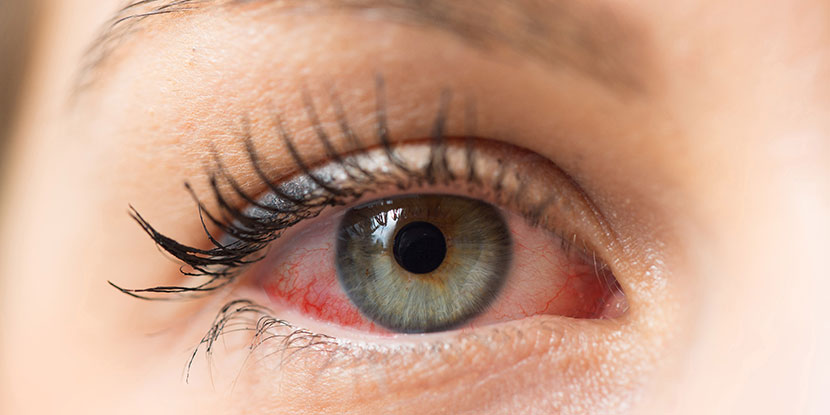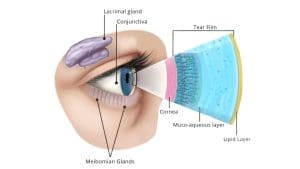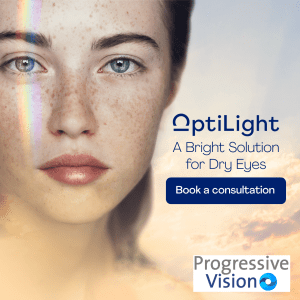
Could you have Dry Eye Syndrome?
Dry eye is a condition that occurs when your tears cannot properly lubricate the eye. Dry eye occurs when your tear film lacks quality and evaporates from your eye too quickly or when not enough tears are produced.
How are our tears produced ?
Our tear film has 3 layers
- Oily layer produced by the meibomian gland on the eyelid margin.
- Watery layer produced by the lacrimal gland. This layer washes away any debris in your eye.
- Mucous layer produced by the conjunctiva. It helps the tear film to stick to your eye and spread evenly creating a smooth optical surface.

If any one of these layers is disrupted the tear film does not keep your eye lubricated and comfortable.
What are the symptoms of Dry Eye?
- Irritation usually in both eyes
- A gritty or burning sensation
- Blurring or fluctuations in clarity of vision
- Ocular symptoms that are exacerbated by smoke, heat or the wind.
What are the most common causes?
- Hormone fluctuations for example, menopause, which is why women are more affected.
- Age related changes to the eyes structure as we get older.
- Medications that can affect tear production such as anti- histamines or beta blockers.
- Exposure to different environments such as dry, airconditioned environments that speed up tear evaporation.
- Increased screen use causing reduced blinking rates affecting tear quality and quantity.
- Ocular conditions such as blepharitis and meibomian gland dysfunction causing tenderness, redness and crusting of eyelid margins resulting in disruption of tear production.
- Systemic conditions such as autoimmune diseases like Lupus, Rheumatoid Arthritis or Sjogren’s syndrome that affect the lacrimal gland causing reduced tear secretion.
- Previous surgical procedures such as LASIK or long-term contact lens wear causing reduced corneal sensation and decreased tear secretion.
What are the most common Dry Eye treatments?
Non-Pharmacological treatments:
- Modification of environment.
- Lid hygiene such as cleansing and hot compresses.
- Punctual plugs to conserve tears.
- Supplements such as fatty acids and omega 3.
Pharmacological treatments:
- Artificial tear supplements preferably preservative free.
- Liposomal sprays to replace oily layer of tear film.
Other dry eye treatment advice:
- Regular VDU and screen breaks.
- Increase blink frequency. Use 20/20/20 rule (every 20 minutes look up for 20 seconds, 20 feet away).
- Good wraparound sunglasses with 100% UV sun protection.
- Reduce contact lens wearing time if experiencing symptoms of dry eye.
New devices for treatment of Dry Eye
BlephEx
This is a gentle hand-held medical grade micro- sponge that is now available at Progressive Vision. It used to safely clean and exfoliate your eyelids and lashes. It is used to treat Blepharitis which is a common recurrent eyelid condition that can cause dry eye discomfort. BlephEx allows rapid relief from these symptoms and the procedure is comfortable and easy to perform.

Lumenis OptiLight
This is also available at Progressive Vision and is a light based, non-invasive treatment focused on the skin around the eyes.
- It is the first and only IPL FDA approved for dry eye management.
- It uses precise pulses of light to reduce the inflammation that is typically associated with dry eye disease, improves tear evaporative time, and increases the functionality of the meibomian gland that produces the lipid layer.
- During treatment, a coupling gel is applied to the area of treatment and your eyes are covered with shields.
- As a light is applied to the skin, you may experience a warm sensation.
- The treatment is gentle with minimal discomfort and takes around 15 minutes.
- The standard course of treatment is 4 sessions spaced 2-4 weeks apart, but a personalised plan is made to suit each individual’s dry eye needs.
